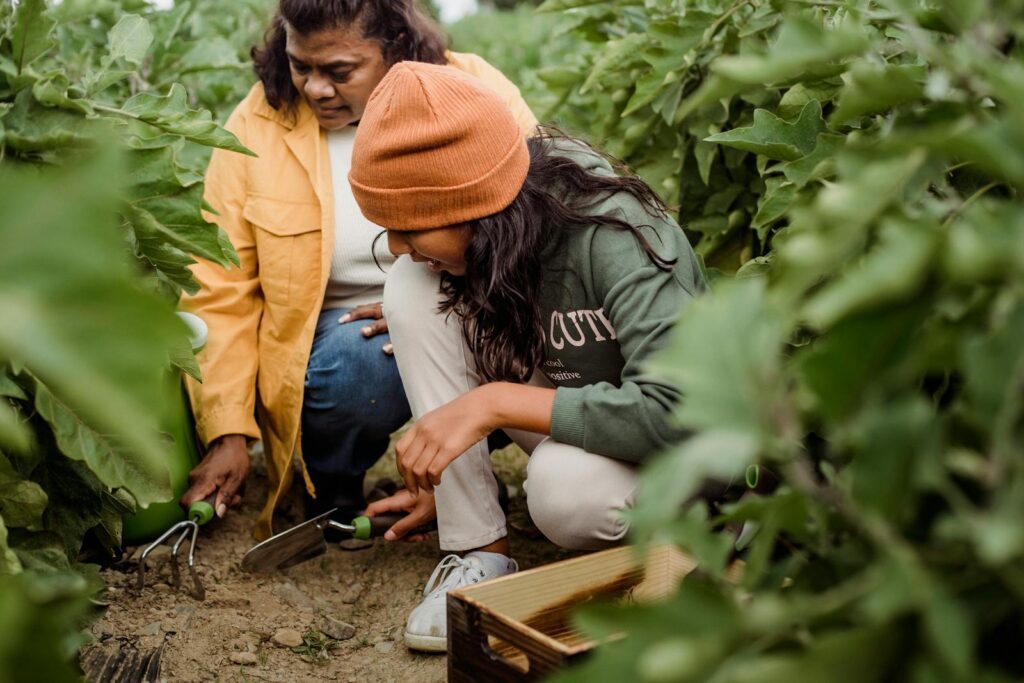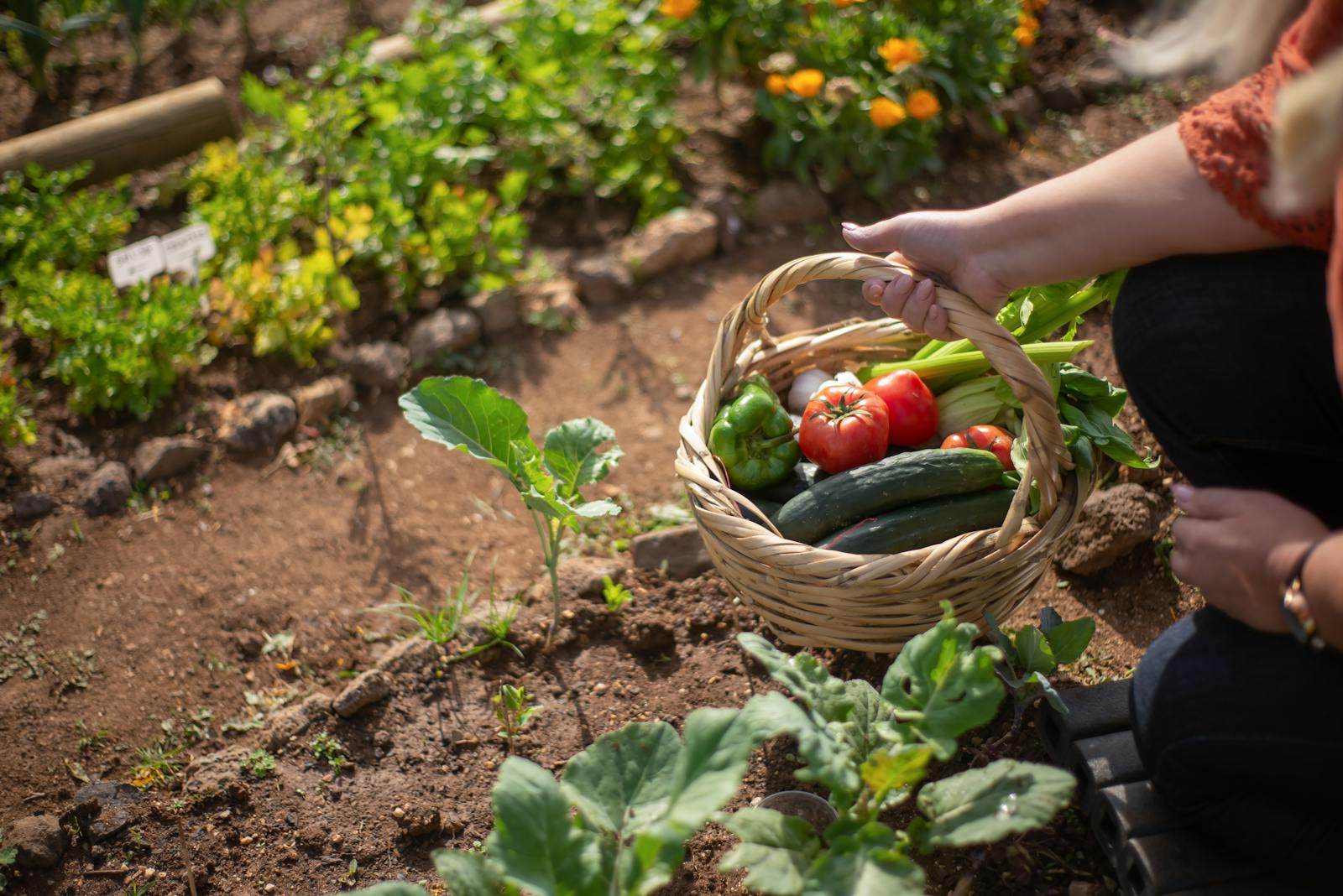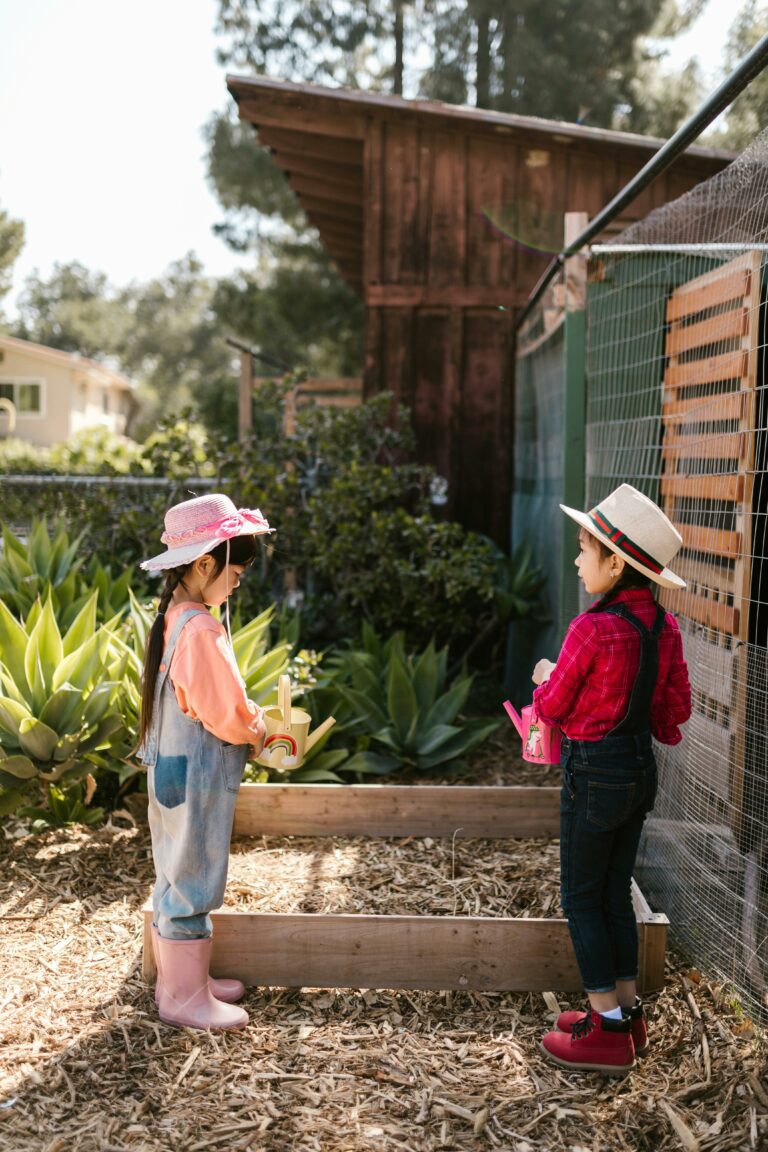Preparing for Spring Gardening for Families: How Growing Your Own Food Boosts Health & Supports the Planet
Spring is just around the corner, bringing longer days, warmer air, and the return of vibrant colors after a quiet winter. It is my favorite season. It is the perfect time to get outside, soak up the sunshine, breathe in some fresh air, and reconnect with nature. One of the best ways to do that is by starting a spring garden as a family.
Spending time in nature isn’t just about camping trips, hiking, playgrounds, or any other grand outdoor adventures. It can be as simple and intentional as tending to a garden, having your hands in the dirt, connecting to where our food comes from, and watching tiny seedlings grow.
I was already a big nature lover before kids. Back then, I considered my nature experiences to be those where I was hiking, backpacking, and camping. Having kids changes this slightly. Life got busier and more hectic. I was craving slower and calmer moments where I wasn’t huffing and puffing up a mountain.
I found a new way of connecting with nature through gardening. What better way to not only get outside but also to connect with nature and engage in life giving activities that are good for the planet. Gardening is one of the most accessible and rewarding ways to experience nature’s benefits while fostering a deeper connection with the environment—especially for kids.
Health Benefits of Gardening
Being outside and in nature has numerous mental, physical, social, and emotional benefits for us as parents but also for our children. While there are so many ways that any one person can spend time outdoors, gardening is one of my favorites. Gardening is also one of those global pastimes that can be done at any age and where the entire family can participate.
While you or I may intuitively know that being in the garden is good for our health, research now supports these claims. A 2016 meta-analysis showed positive associations with gardening and a variety of health outcomes including depression and anxiety symptoms, stress, mood disturbances, and body mass index. It also shows positive associations with increases in quality of life, sense of community, physical activity levels, and cognitive function.
When you grow your own food, you are more attuned to the types of amendments or fertilizers you add to the soil and are more attuned to what you spray, if anything, for pest management. Homegrown food also retains a higher nutritional value than food that has been packaged, processed, and shipped as it goes direct from the garden to your table.
There is also evidence that focusing on healthy biodiverse soils may “promote immune fitness” and improve the gut microbiome. The “Hygiene Hypothesis” has been linked to the development of diseases such as asthma and allergies. It suggests that a societal focus on sanitation and a “too clean” environment doesn’t allow enough exposure to germs for a young child’s immune system to know what to do. Having hands in the dirt and soil, particularly if it has been nurtured and nourished through a garden, can help with some of this exposure.
Now, I’m not saying that we shouldn’t keep our homes clean. What I am saying is that some garden playtime is good for both the kids and their grown ups.
Additionally, kids may be more inclined to eat the fruit and vegetables that they grow – or at least be more willing to try it. Many toddlers go through a picky eating phase, my daughter included. But I have always been pleasantly surprised when she is willing to pick and eat tomatoes off the vine or directly munch on a swiss chard leaf with roots still in the soil.
Gardening is Good for the Earth
Gardening also gets you more intimately connected with your physical environment. Through the seasons, you start to notice sunny and shady spots in your garden, the quality of the soil, and the needs of the plants. Because what you grow changes with the seasons, you also begin to live more seasonally.
If you grow a vegetable garden, you are instantly more intimately involved in where your food comes from. And trust me when I say, nothing tastes better than homegrown vegetables.
I pay more attention to how I feed the soil and what I use for pest management. I avoid synthetic pesticides and fertilizers, opting instead for organic fertilizers, compost, companion planting and letting beneficial insects do their job. I care more about which plants I grow that are beneficial for pollinators. We most recently started some milkweed seeds in the hopes of attracting the endangered monarch butterflies. I let flowers go to seed to provide food for birds. I grow based on the seasons. I am cognizant about efficient water usage, drip irrigation, and drought tolerant varieties.
Since focusing on pollinator friendly habitats and California native landscapes, I have seen a greater variety of butterflies, bees, birds, and other animals in my suburban backyard. Adding a garden creates more green space in your backyard and allows opportunities for biodiversity of plants.
As a gardener, the small actions that you take with your garden can be beneficial for our changing climate.
Tips for Starting a Spring Garden
When I first dreamed of starting a garden, I’ll be honest, I was a little intimidated. But just like learning anything new, break it up by starting small and focusing on the basics. In order for a successful vegetable garden to grow, it needs to be in a sunny location, consistent water, and good soil. Below are some tips on spring gardening for families.
- Determine your growing zone
This helps to identify what plants and veggies are suitable for your growing region. For example, if you live in a colder climate, unless you’ve created a specific microclimate through greenhouses and other fancy tools, you might not have as much success growing tropical fruit.
- Find your garden location
Many vegetables need about 6-8 hours of sunlight to thrive. Flowers and other plants may have other requirements. If you’re shopping at the nursery, many of the nursery pots will tell you just what the plants need. Keep this in mind when selecting your plants.
- Start small
Determine if you will be growing in pots and containers or if you will be setting up an in-ground or small raised bed garden. If even this seems overwhelming, consider starting even smaller with a few herbs on a windowsill. You don’t need a massive space to start gardening. My first garden consisted of 10 inch pots that were way too small for my tomatoes and peppers, but I still consider it a learning experience for getting me to where I am now.
- Get the family involved
Gardening with kids can be a lot of fun. Create your list of what you want to plant. Is it veggies, flowers, trees, shrubs? Let your kids and other family members have a say in what they would like to grow. For vegetables, choose what you are likely to eat but don’t be afraid to experiment. Involve your kids in various garden tasks like watering or pruning if they are old enough. And definitely let everyone be involved in the harvesting.
- Nature as a learning tool
Let the garden be your teacher. Gardening is one of those things that you just learn by doing. I’ve heard many people say that they don’t have a green thumb. But I’ve actually killed more plants being a gardener than I ever did before. And I still keep going!
Getting in the Garden for Lifelong Learning
Gardening is one of those things where there is just so much that you can learn along the way, season after season. I have had many many failures. But I have also had many successes. What has kept me going is the joy I get from eating food that we have nourished on our own. We have had fresh salads through the winter, tomato varieties they don’t sell in the stores, the sweetest strawberries I’ve ever had.
For me, gardening has been an incredible way to slow down, reconnect with nature, and nourish my family. So, what will you be planting this spring? Share in the comments—I’d love to hear!



